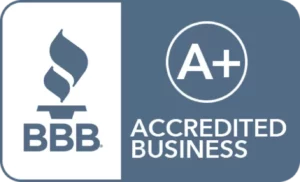IRA FAQ
IRA FAQ – A list of the most frequently asked questions regarding Self-Directed IRA and Roth IRA accounts including contributions and conversions rules –
What is an IRA?
An individual retirement account (IRA) is a trust or custodial account set up in the United States for the exclusive benefit of you or your beneficiaries. The account is created by a written document. There are two kinds of IRAs: individual retirement accounts (trusts and custodial) and annuities (contracts).
What is a Traditional IRA?
A Traditional IRA primarily is a tax-deferred retirement savings vehicle. Tax is generally deferred on Traditional IRA contributions and earnings until the year the IRA owner takes a distribution. A traditional IRA is essentially any IRA that is not a Roth IRA or a SIMPLE IRA. In general, if you have income from working for yourself or someone else, you may establish and contribute to an IRA. The IRA can be a special account that you can set up with a bank, brokerage firm, or other institutional custodian. Alternatively, it can be an individual retirement annuity that you that you can purchase from an insurance company.
Who can set-up a Traditional IRA?
You can set up and make contributions to a traditional IRA if:
- You (or, if you file a joint return, your spouse) received taxable compensation during the year, and
- You were not age 73 by the end of the year.
You can generally set-up a Traditional IRA if you have income from working for yourself or someone else. If your only income is social security or passive income, such as interest, dividends, rental income, or capital gains, that income would not be considered earned income and would not be considered income available for purposes of making an IRA contribution.
Who tends to setup IRAs?
IRA owners tend to be savers. According to an ICI Research Perspective publication from November 2013, the median financial assets of IRA-owning households were eight times greater than the median financial assets of households that did not own IRAs. Also, IRA owners more likely tend to be married, employed, and have college or postgraduate degrees than households that do not own IRAs.
How do I setup an IRA?
An individual may establish an IRA with a bank, savings, and loan association, credit union, trust company, such as IRA Financial Trust Company, a brokerage firm, or other organization that can demonstrate to the IRS the ability to lawfully administer the IRA account. The trustee or custodian must be a bank, a federally insured credit union, a savings and loan association, or an entity approved by the IRS to act as trustee or custodian. An individual retirement annuity is generally established through an insurance company.
To establish an IRA, the IRA holder and the financial organization offering the IRA must agree upon certain terms and condition in writing. An IRA is established when the individual and the financial institution sign and receive the IRA opening documents. You can set-up an IRA at any time. When the IRA is opened, it is essentially a trust with no investments. The IRA is funded when the IRA owner makes contributions or funds are transferred or rolled over from another retirement account.
What requirements must be met?
- The trustee or custodian must be a bank, a federally insured credit union, trust company, a savings and loan association, or an entity approved by the IRS to act as trustee or custodian.
- The trustee or custodian generally cannot accept contributions of more than the deductible amount for the year; however, rollover contributions and employer contributions to a simplified employee pension (SEP) can be more than this amount.
Contributions, except for rollover contributions, must be in cash. (See Rollovers) - You must have a non-forfeitable right to the amount at all times.
- Money in your account cannot be used to buy a life insurance policy.
- Assets in your account cannot be combined with other property, except in a common trust fund or common investment fund.
- You must start receiving distributions by April 1 of the year following the year in which you reach age 70½ (Required Minimum Distributions).
What are the maximum contributions to an IRA?
Each year, the IRS sets the annual limit for IRA contributions. For 2023 the limit is $6,500. However, if you are at least age 50, you can make a catch-up contribution of another $1,000, for a total of $7,500.
Can I make less than the maximum allowed IRA contribution limit?
You are not required to make maximum contributions to your IRA each year. In fact you are not required to make any contributions to your IRA in any year. However, if contributions to your traditional IRA for a year were less than the limit, you cannot contribute more after the due date of your return for that year to make up the difference.
What happens if I make more than the maximum IRA contribution limit?
If contributions to your IRA for a year were more than the maximum IRA contribution limit, for that year, you can generally apply the excess contribution in one year to a later year if the contributions for that later year are less than the maximum allowed for that year. However, a penalty or additional tax may apply.
In general, if the excess contributions for a year are not withdrawn by the date your return for the year is due (including extensions), you are subject to a 6% tax. You must pay the 6% tax each year on excess amounts that remain in your traditional IRA at the end of your tax year. The tax cannot be more than 6% of the combined value of all your IRAs as of the end of your tax year. (The additional tax is figured on Form 5329).
Can I have an IRA if I also contribute to another retirement account?
If both you and your spouse have compensation and are under age 73, each of you can set up an IRA. You can have a traditional IRA whether or not you are covered by any other retirement plan. However, you may not be able to deduct all of your contributions if you or your spouse is covered by an employer retirement plan.
If you and your spouse file a joint return, only one of you needs to have compensation. You and your spouse cannot both participate in the same IRA.
How many IRAs can I have?
An IRA holder may have an unlimited number of IRAs with one or more financial organizations. For example, you can set-up an IRA with Bank X in Year 1 and make a contributions and then set-up another IRA with Bank Y in Year 1. Although you can establish more than one IRA, the IRA annual contribution limits applies to all IRAs together. So, if you are under 50 years old and have 3 different IRAs, as of 2023, you cannot make IRA contributions in an amount that will exceed $6,500 including all your IRA accounts ($7,500 of you are over the age of 50). The contribution can be allocated to one IRA or divided among all or some of the other IRA accounts.
What is a Roth IRA?
A Roth IRA is a different type of tax-advantaged IRA. Instead of funding one with pretax dollars, you contribute after-tax money. While there’s no immediate tax-break, all qualified distributions from a Roth IRA are tax-free. Further, there are no required minimum distributions and you can contribute as long as you have earned income, no matter your age.
How do you decide between a traditional IRA and a Roth IRA?
There’s no right or wrong answer. The decision usually depends on a variety of factors and circumstances.
If you are not eligible to take advantage of tax-deductible contributions to a traditional IRA but qualify for after-tax contributions to a Roth IRA, then the Roth IRA is the better choice. Roth IRA contributions are made in after-tax dollars, while earnings are usually not taxable.
If contributions to a traditional IRA are tax deductible and you are also eligible to contribute to a Roth IRA, here are some considerations in making your decision:
- If you expect your retirement tax rate to be equal or higher than it is today, a Roth IRA could yield the greatest benefit.
- If you expect your retirement tax rate to be much lower than it is today, you may want to choose to make contributions to a traditional IRA.
- If you expect your investment to generate strong returns, then a Roth IRA could be a better option.
Finally, if you are younger, the Roth IRA is more attractive because you will have more time to grow your retirement without paying any tax.
How do you convert to a Roth IRA?
IRA Financial Trust Company will assist you with making a Roth IRA conversion in connection with your Self-Directed Roth IRA. A conversion to a Roth IRA results in taxation of any untaxed amounts in the traditional IRA. However, the 10% early distribution penalty will not apply.
You can convert your traditional IRA to a Roth IRA by:
- Rollover – You receive a distribution from a traditional IRA and contribute it to a Roth IRA with IRA Financial Trust within 60 days after the distribution (the distribution check is payable to you);
- Trustee-to-Trustee transfer – You tell the financial institution holding your traditional IRA assets to transfer an amount directly to IRA Financial Trust, the new Trustee (IRA custodian) of your Roth IRA. The distributing Trustee may achieve this by issuing you a check payable to the new Trustee – IRA Financial Trust Company;
- Same Trustee transfer – If your traditional and Roth IRAs are maintained at the same financial institution, you can tell the Trustee to transfer an amount from your traditional IRA to your Roth IRA.
Below are some important points to consider when deciding whether to convert your Traditional IRA to a Self-Directed Roth IRA.
- Do you have the ability to pay income taxes on the money you convert from your Traditional IRA?
- Based on your income tax bracket, does it make sense to pay the entire tax due in the current year? If you expect your rate to go up, converting may be for you. If you think it will go down, then the opposite holds true.
- Do you anticipate withdrawing Roth IRA funds for personal use within five years of conversion? If so, you may face taxes and penalties if you withdraw within five years of a conversion.
- How confident are you in the projected investment returns relating to your IRA? The more confident you are that the investment will go up significantly in the future, the more attractive a Roth IRA conversion will be.
Converting a Traditional IRA to a Roth Self-Directed Roth IRA has a number of tax advantages and can offer you multiple tax and investments benefits.











